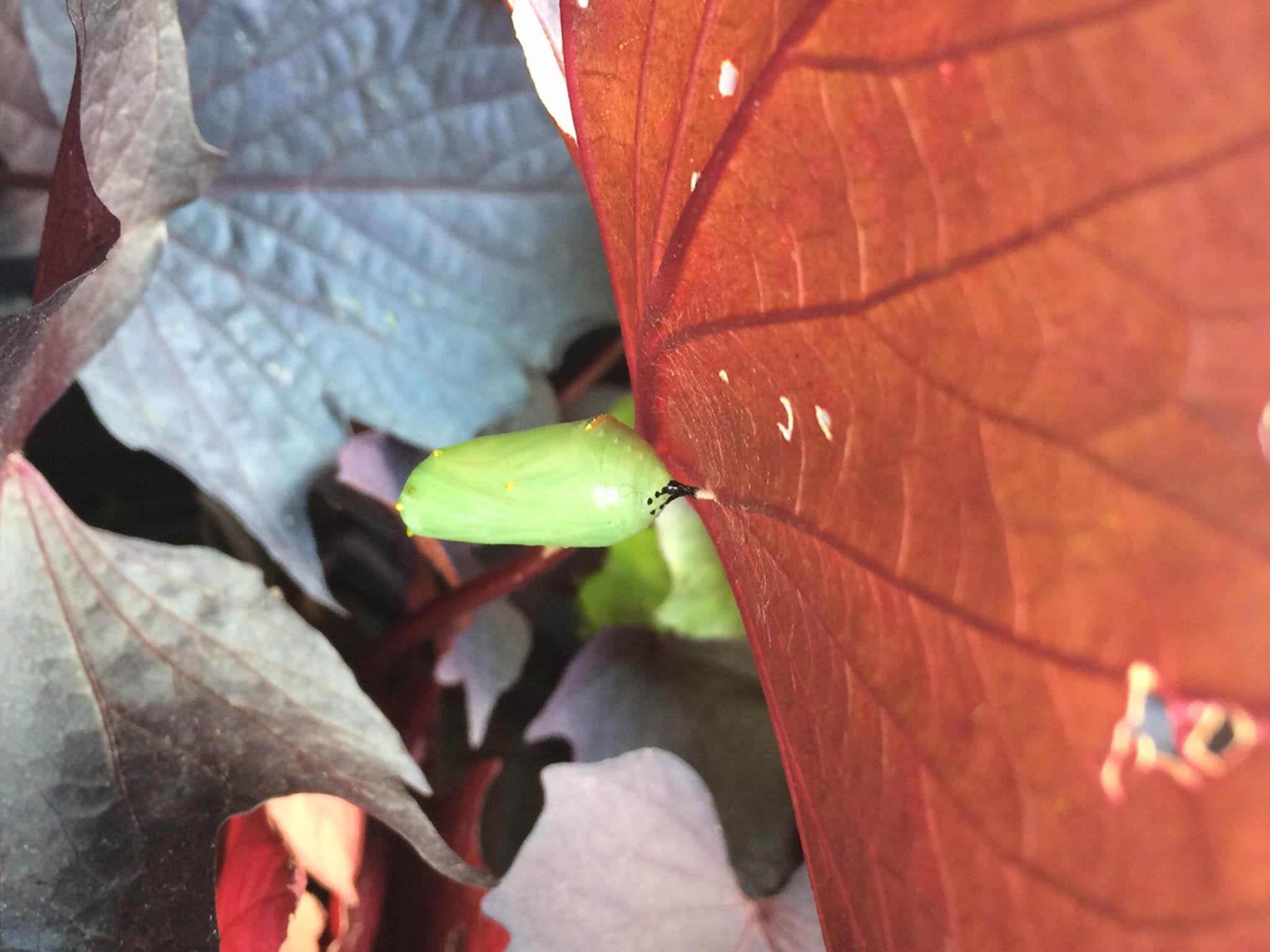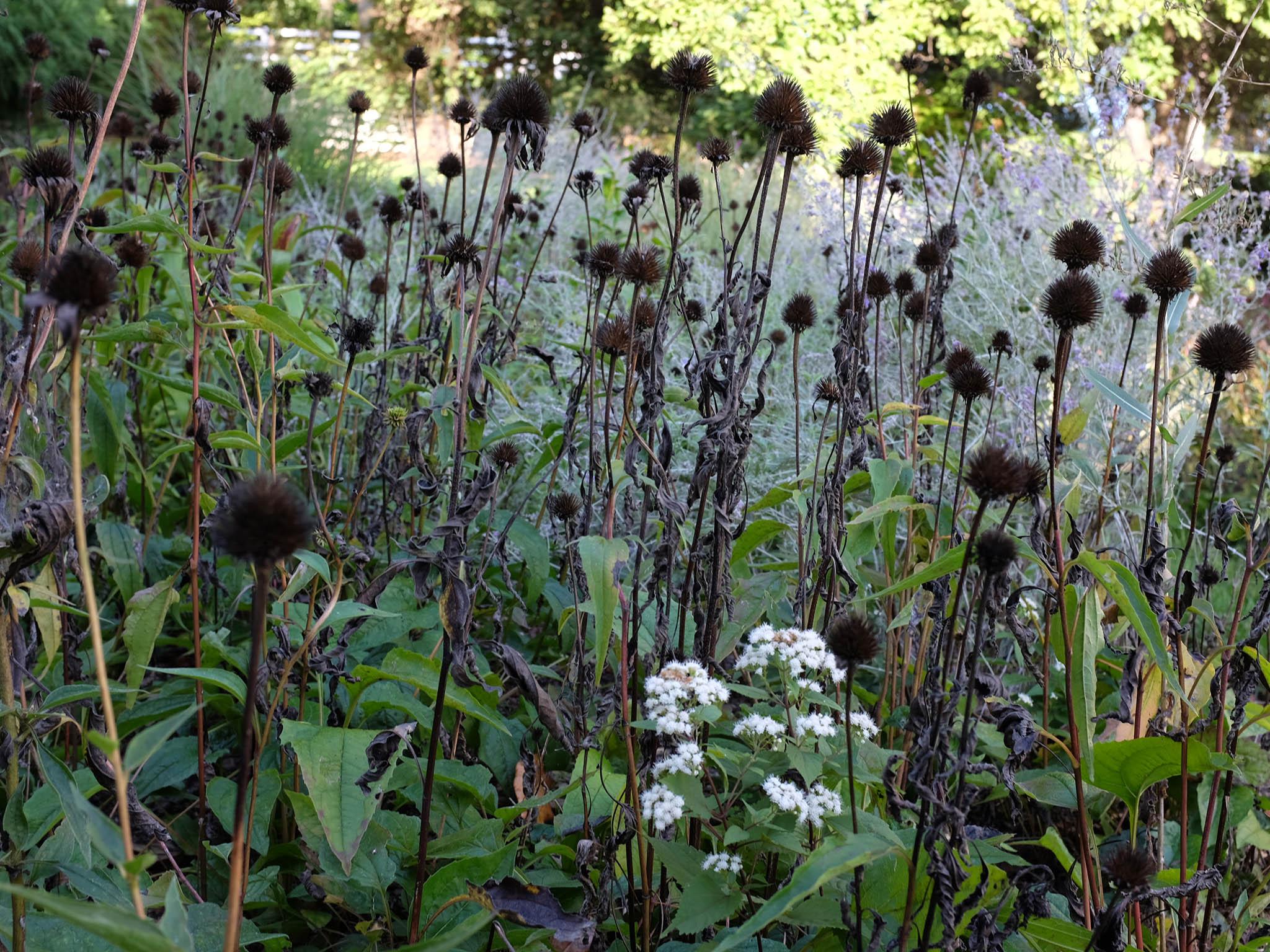The beauty and ecological benefits of a garden in decay

Your support helps us to tell the story
From reproductive rights to climate change to Big Tech, The Independent is on the ground when the story is developing. Whether it's investigating the financials of Elon Musk's pro-Trump PAC or producing our latest documentary, 'The A Word', which shines a light on the American women fighting for reproductive rights, we know how important it is to parse out the facts from the messaging.
At such a critical moment in US history, we need reporters on the ground. Your donation allows us to keep sending journalists to speak to both sides of the story.
The Independent is trusted by Americans across the entire political spectrum. And unlike many other quality news outlets, we choose not to lock Americans out of our reporting and analysis with paywalls. We believe quality journalism should be available to everyone, paid for by those who can afford it.
Your support makes all the difference.Spring is not a moment in the garden but a sequence, a gentle unfurling of plant life that grows fuller by the day at a tempo that is almost out of sync with human perception.
One minute perennials are peeping out of the earth, and the next the soil is covered by fully grown greenery. The fall is the same way, except the movement is in reverse. With each passing week between early October and Thanksgiving, more perennials, grasses, groundcovers and the stuff of the lower layers of the garden will shrink, darken and start to lie down. Because our gaze is fixed on the changing leaf colors of the trees and shrubs, this other show occurs at a more subconscious level, but the two are related and deserve to be enjoyed together.
Where once the odd coneflower looked dried in the flower beds, other plants follow the same course, until there is a wholesale shift in the character of the garden from repletion to decline and seediness.
We are wired to see decay as rot, and rot as a threat to our well-being. So when we take stock of the autumn landscape, especially after a killing frost, our instinct is to clean it all up. This is a mistake on a number of levels.

The withering of the top growth of perennials and grasses is not a pernicious thing, but a natural part of their life cycle. They will re-sprout afresh in the spring from their crown buds. This year's declining growth, meanwhile, is likely to be full of the very stuff of life, ripening seed.
I think - I hope - that our gardens are becoming more lavishly and dynamically planted with perennials and grasses, and with an ecological bent. If so, this fall conundrum will only become more pressing.
I see this decay as something beautiful, the way a steel panel becomes patinated with surface rust. So my approach to garden grooming in the fall is to remove obvious blight - shriveled hosta leaves, for example, along with diseased foliage - but to let anything else stand through the fall and winter as long as it isn't an eyesore.
I particularly like the effect of the black stalks and seed heads of rudbeckias, from the knee-high black-eyed Susans to the taller giant coneflower. Composites as a rule make for handsome zombies, especially the purple coneflowers. The tall, wiry cup plant is lovely in its deterioration. Asters, too, are attractive in the dead months, especially when the fluffy, downy seeds make a break for it. Other effective perennials include amsonias, calamintha, perovskia and swamp milkweed. Need it be said, this is the time of year when all the ornamental grasses come into their own, green or brown, including the native bluestems, panicums and prairie drop seed.
If you want icing on this cake, nature provides it in the dewdrops of October and the ice crystals of November and December. The latter is a phenomenon called riming, and although the mid-Atlantic isn't perhaps the best climatic region for this, when it happens you should take a moment to savor it. The most dramatic display of riming I saw was about four years ago in England, where a whole woodland beyond a field was frosted. It was like observing a finely crafted black-and-white art photo, but in negative. Such morning scenes, in miniature, await the untidy gardener.
There is an equally compelling argument for not weed-whacking and clearing the ornamental beds at this time of year, or the leaf litter that is obsessively blown, gathered and bagged in November. This detritus provides vital shelter and nourishment for wildlife. Doug Tallamy, author of a landmark book about ecological gardening, "Bringing Nature Home," sees a direct link between the decline of fireflies and the modern-day fixation with leaf blowing. "Fireflies spend their entire larval life in the litter," he said. "They are only adults for a short period." Tallamy, a professor of entomology at the University of Delaware, is also co-author of "The Living Landscape."
When we cut back the seed heads and stalks, we deprive birds and small mammals of seeds. "I always encourage people, if they have seed-producing plants such as black-eyed Susans, purple coneflowers or goldenrods, to leave them up because the overwintering birds really rely on them," said Deborah Landau, an ecologist with the Maryland/D.C. chapter of the Nature Conservancy.
Neatniks also harm countless species of beneficial insects. Landau said other casualties include the egg masses of such creatures as praying mantises and spiders. The former resembles a hardened foam mass enveloping a stem; the latter looks like a string of pearls.
Many native bee species spend the winter as pupae within the pithy stems of perennials and the canes of hydrangeas, Tallamy said. "Much of the insect community is spending winter in that debris we get rid of all the time," he said. One option for appearance's sake is to cut back material in the front yard but leave dead top growth standing in less-visible parts of the garden, he said. Stalks and leaves that must be cut can be stored elsewhere outside, but don't lay them down. The snow will flatten a pile and it will rot, he said.
Landau said these undisturbed beds also provide shelter for frogs and salamanders (and presumably a third amphibian, the toad).
Also, this debris is home to butterflies. I was in the Smithsonian's Ripley Garden the other day, and it was Grand Central for monarch butterflies - adults, caterpillars and even pupae. If it stays warm, the chrysalises will hatch soon and the butterflies will head south. But other butterflies spend the winter here in their cocoons, and the pipevine plants were loaded with pipevine swallowtail caterpillars eating their way into a pupal stage, to emerge as adults next year.
"The less disturbance the better," Landau said. "All these animals have adapted to depend on these plants in the winter." Maybe we can be smart enough to copy them.
Join our commenting forum
Join thought-provoking conversations, follow other Independent readers and see their replies
Comments